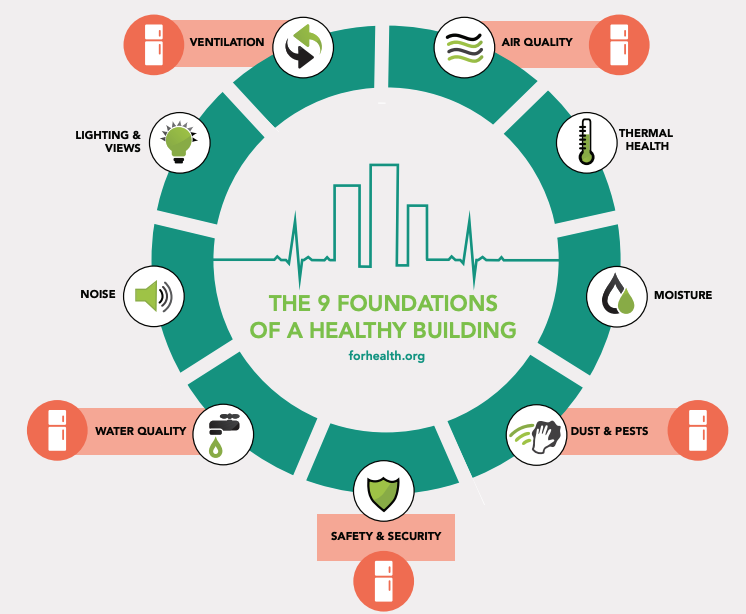Particle levels while cooking with an unvented stove can reach 10x higher than our health-based limits for outdoor air pollution, and they can linger indoors for hours.
If you’ve come to this section looking for tips on healthy eating, well, you’ve come to the wrong place! While it is of course important to focus on food and nutrition, don’t forget that the kitchen environment can have an impact on your health, too. Cooking releases all sorts of wonderful odors into the home. It can also release a whole host of airborne contaminants that you’ll want to control. And with all that food comes the potential for pests (and with pests come pest allergens). Then we have to think about the quality of the water we’re drinking and the basics like fire safety.
If you did come here looking for nutrition tips, we’ll point you to our colleagues in the Nutrition Department at the Harvard T.H. Chan School of Public and their excellent website, The Nutrition Source.
Cooking can generate particles that get distributed around the house. Cooking with a gas stove can generate NO2. Using an exhaust hood, if it’s properly ventilated to the outdoors, can dramatically decrease the amount of cooking-related pollutants in your home.
A fire extinguisher is not a fire-fighting tool; you cannot use it to fight through a fire during an escape. It is meant to quickly put out a small fire in the home, and a typical fire extinguisher for use in the kitchen gives you a few seconds to put out the fire. Remember to P.A.S.S.: Pull out the pin, Aim at the base of the fire, Squeeze the handle, and Sweep across the fire. DO NOT LET GO until the extinguisher is emptied. If the fire is not out after that, evacuate the house immediately. Make sure everyone in the family knows where it is, and make sure they know how to use it.
Tap water delivered to your home has to meet national drinking water standards, so you should feel confident in the water quality as it arrives at your house. But these drinking water standards do not cover everything, and once that water enters your house pipes, it can change. For example, homes with leaded pipe or solder can leach lead into the water. Consider installing a whole-house water filter system, or using a smaller water filter at the faucet. If you have a well, test your water.
Many homes have pest problems and it’s not the fault of the homeowner or tenant. Use Integrated Pest Management, or IPM, which emphasizes tiered strategies to prevent pests. For example: remove clutter, trash, standing water, open food, and dirty dishes; properly identify and monitor pests; and control pest problems using physical traps, natural pest enemies, or targeted pesticides as a last resort. IPM has been shown to successfully control pest issues while minimizing the use of toxic pesticide chemicals.
Life seems so much easier with lightweight plastic containers and easy-to-clean skillets. But the chemicals that make plastic so desirable like phthalates and ‘non-stick’ pans so, well, non-stick, also make them harmful to health. Even kitchenware labeled free of a toxic chemical (heard of ‘BPA-free’?) can have equally concerning replacements that leach into food. For a (chemically) healthier diet, choose glassware over plastic and cast iron or ceramic cookware over non-stick.
